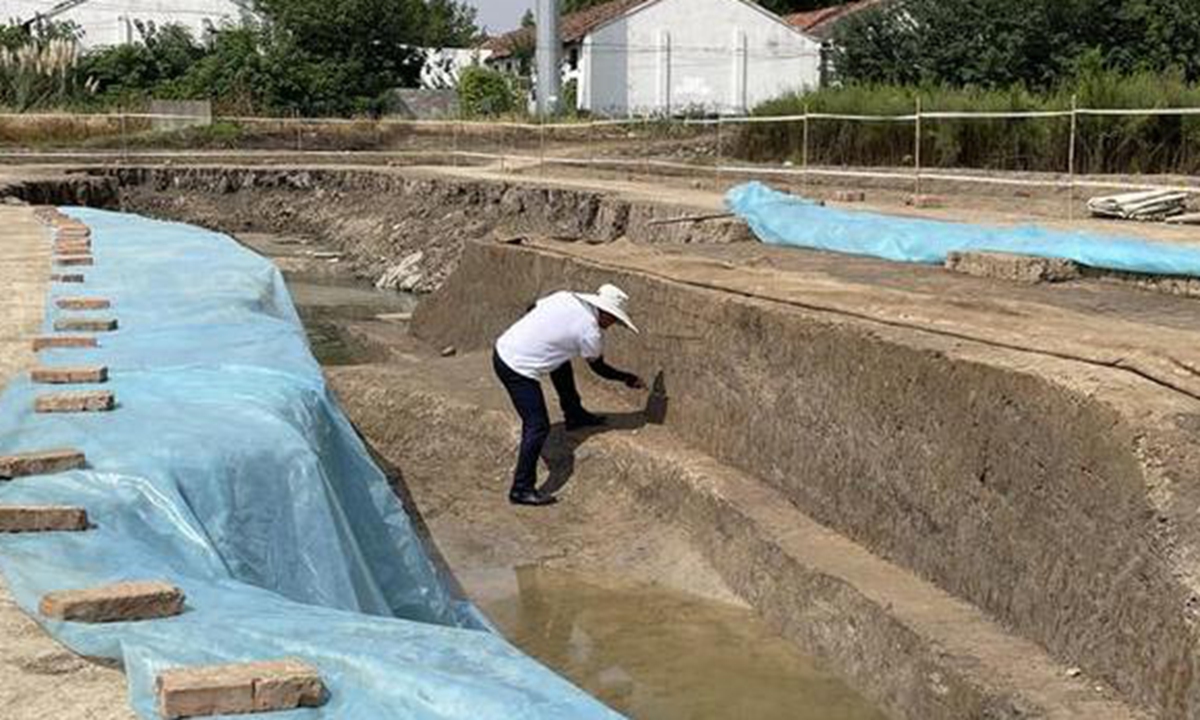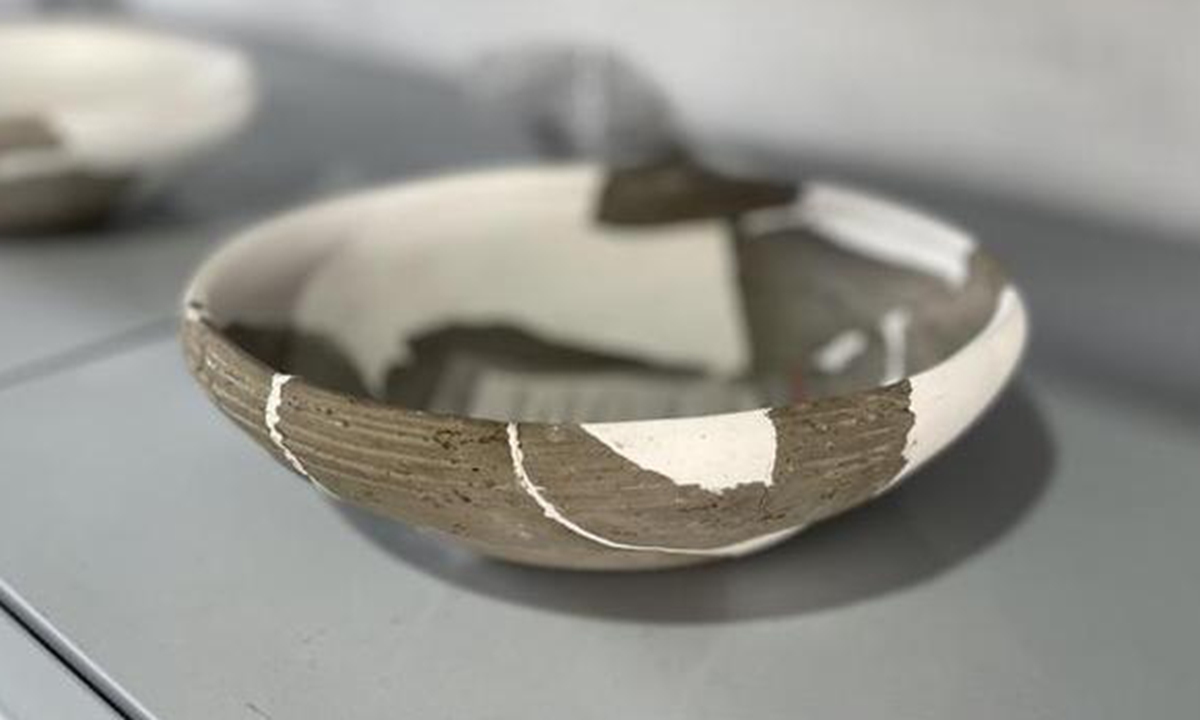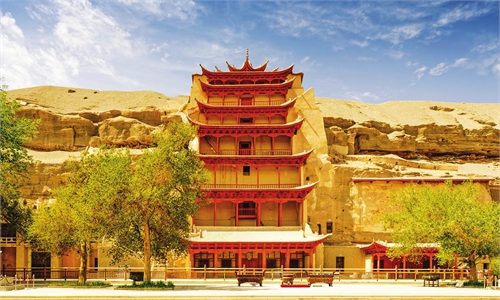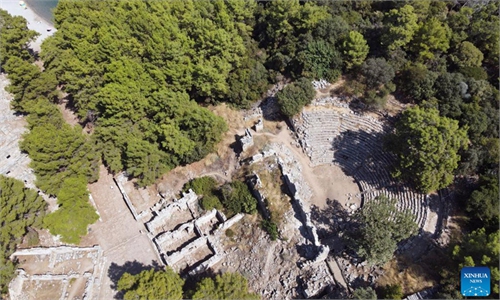ARTS / ART
Large ancient Venice-like water city archaeological site found in E China’s Jiangsu

Archaeologists work on Wujiabang Ruins, a large ancient water city traced back to around 2,500 years ago were found in East China's Jiangsu Province. Photo: Xinhua News Agency
The ruins of a large ancient water city traced back to around 2,500 years ago were found in East China's Jiangsu Province, Xinhua News Agency reported Saturday.
The Wujiabang Ruins were located only 10 kilometers away from one of China's largest freshwater areas, Lake Taihu, according to the archaeologists' report, and as the rivers and streams connected every corner of the city, experts believe that "waterways were the citizens' main way of transportation instead of solid roads."
"It's supposed to be a water city," said Li Guangri, deputy director of the Wuxi Institute of Cultural Relics and Archaeology.
"Rivers crisscrossed the city at the time, making waterways a common transportation mean for the locals. When they got out of the house, they went on a boat," Li added.
The experts dated the city as belonging to the Spring and Autumn Period (770BC-476BC).
Covering an area of 800,000 square meters (0.8 square kilometers) in total, the Wujiabang Ruins included an inner city, an outer city, and an outskirt area. The inner city, covering an area of 83,000 square meters, was shielded by walls on the west and south sides, and was protected by moat on the east and north sides.
One noticeable thing was that archaeologists found 99 wells in the inner city, suggesting "a considerable amount of population at the time in Wujiabang," added Li.
However, as each well had only an average of 5-meter depth, "these wells were not the ordinary deep wells that we see in everyday life considering their shallow depth. And how the ancient people actually used them also needs to be further studied," professor Li Xiaojie of the Center for Historical Geography of Fudan University told the Global Times on Sunday.
"However, at another ruin site located in the middle reaches of the Yellow River, archaeologists discovered that every household had their own well as a basic living supply, so it cannot be ruled out that the Wujiabang Ruins site may present a similar arrangement," he added.
The discovery of Wujiangbang Ruins was accidental.

Archaeologists found many relics as well as 99 5-meter-deep wells at Wujiabang Ruins, a large ancient water city traced back to around 2,500 years ago were found in East China's Jiangsu Province. Photo: Xinhua News Agency
At the end of 2019, local farmers found scattered pottery relics when they were digging a ditch. The Wuxi Institute of Cultural Relics and Archaeology conducted a massive excavation in the following year and found the remains of city walls, pottery kitchen ware and porcelains.
In a corner which archaeologists believed to be the living area, there were traces of ashes, an empty hollow which seemed supposed to be a pillar supporting the house and two wells.
Next to the ashes, archaeologists also found kitchen ware made of pottery and porcelain.
The archaeological team told Xinhua that as the excavation is still underway, two more remains of "high-level architecture" are yet to be revealed.
Next to noble tombs
The ruins are located inside the Hongshan Ruins Archaeological Park in Wuxi, Jiangsu, which once amazed the archaeological world with its hundreds of tombs owned by high-rank nobles.
However the identities of the tombs' owners remain unknown.
The Hongshan Ruins were among the first to be listed as one of the national archaeological parks. The site consists in large-scale ruins in the lower reaches of the Yangtze River and it is mainly known for its discoveries of over 140 tombs belonging to the Spring and Autumn Period.
In 2002, the Hongshan Ruins was discovered during an urban renovation project.
As the local government halted the ongoing construction project, rescue excavations were carried out at the same time and archaeologists found 2,300 cultural relics along with the tombs.
The unearthed celadon musical instruments also provided rich information for the ancient art studies in the Wuyue area (culture in the lower Yangtze delta).
"The discovery of the Wujiabang Ruins not only provides more clues for us to study the source of Wuyue culture, but it may also give some more clues about the owners of those noble tombs," noted Liu Baoshan, director of the Wuxi Institute of Archaeology.


